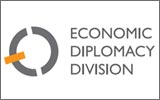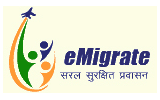About Namibia
Home > About Namibia
Country Note on Namibia
Republic of Namibia, with a population of 2.3 million (approx), is a vast, sparsely populated country situated along the south Atlantic coast of Africa. With its surface area of 824,418 sq kms, Namibia is the 34 th largest country in the world. About half of the population is of the Ovambo tribe and concentrated in the north of the country. Other principal groups are the Damara, Herero, Okavango, Nama, East Caprivian, Bushmen, Rehoboth Baster, Kaokovelder and Tswana. It is demarcated into 14 regions, namely the Caprivi, Kavango, Kunene, Omusati, Ohangwena, Oshana, Oshikoto and Zambezi regions in the north, the Omaheke. Otjozondjupa, Erongo and Khomas Regions in the central areas, and the Hardap and Karas regions in the south.
2. Apart from its capital, Windhoek, the main cities of Namibia are: Walvis Bay; Rundu; Oshakati; Swakopmund; Katima Mulilo; Grootfontein; Rehoboth; Okahandja; Otjiwarongo; Keetmanshoop and Tsumeb.
3. There is little recorded history of the country before setting up of the first colonial settlements on the coast, with Namibia (then known as South West Africa) becoming a colony of Germany in 1884. There were major clashes and uprisings against the colonisers, notably by the Herero and the Nama tribes, in 1904 and 1908, with the tribal people protesting at the take-over of their lands and cattle. German suppression of these tribes was particularly brutal which evoked charges of genocide.
4. After the First World War, when Germany was defeated, the League of Nations granted South Africa, which was then a British Dominion, the mandate to rule South West Africa on behalf of the British crown. In 1946, following the United Nations ruling that all the League Mandated territories were to be placed under trusteeship and led towards independence, South Africa rejected the ruling, stating that it would continue to administer Namibia under the original mandate. The UN General Assembly terminated this mandate in October 1966 and the UN Council for Namibia assumed administrative responsibility of the territory. Following protracted negotiations, involving UN, SWAPO, the South African regime, western powers, Cuba and USSR, the country gained independence in 1990 and Dr. Sam Nujoma, the then President of SWAPO became the first democratically elected President of Namibia under UN supervision. (Shri Brijesh Mishra was UN Commissioner for Namibia from 1982 to 1987. SWAPO Mission established in New Delhi in 1986 and was funded by Government of India.)
(Walvis Bay was annexed by Britain in 1878 and was not part of the German territory of South West Africa. It was administered from Windhoek until August 31, 1977, having being handed over to South Africa, when the latter became independent from Britain, when South Africa issued a proclamation detaching Walvis Bay from Namibia and administering it directly from South Africa. UNSCR 432 of 1978 declared that Walvis Bay should be reintegrated into Namibia to preserve its territorial integrity and unity. On 1 March 1994, Walvis Bay and offshore islands were finally reintegrated into Namibia, thus completing its de-colonization.)
5. Since its Independence in 1990, Namibia has enjoyed considerable peace and tranquillity after a tortuous past, primarily due to the policy of national reconciliation adopted by the Government.
6. On the economic side, promoting trade and investment is the cornerstone of the Government’s policy. Since its independence in 1990, Namibia has put in place attractive laws, designed to draw foreign investment and promote trading activity. The country is proud of its prevailing social peace, political stability, democratic traditions, rule of law and a well developed infrastructure (road, railways, telecommunications and banking).
7. Major industries in Namibia include mining industry, fishing industry, meat processing and dairy products industry. The economy of Namibia is largely dependent on industrial sectors like mining, fishery, and tourism. Namibia is rich in natural resources like diamonds, gold, silver, uranium, zinc, copper, lead, tin, granite, marble etc. Mining remains the mainstay of Namibia’s economy and it accounts for 20% of country's GDP. Namibia is the fourth largest exporter of non-fuel minerals in Africa and the world’s fourth largest producer of uranium. Namibia is one of the leading diamond producers in the world. Rich alluvial diamond deposits make Namibia a primary source for gem-quality diamonds. Diamond mining contributes to almost one third of the GDP of Namibia. Namibia also produces large quantities of lead, zinc, tin, silver, and tungsten.
8. Namibia has one of the biggest GDP per capita in Africa. Yet, due to an uneven distribution of income, half of the population lives below the poverty line. The Namibian economy is dependent on the extraction and processing of minerals like diamonds, uranium, lead, zinc, tin, silver, and tungsten. Subsistence agriculture is the main source of income for 50% of Namibians. Agriculture contributes a small part of Namibia's GDP. Nevertheless, most of the job opportunities for the poor in Namibia are available in this sector. Major agricultural products include peanuts, millet, sorghum etc.
9. The energy sector in Namibia is principally dependent on oil and natural gas, specifically coal and iron ore. The tourism industry also plays an important role behind the growth of Namibian economy
10. With the aim of becoming an entry point for Southern Africa, Namibia has a very efficient deep-water port at Walvis Bay and has completed the Trans-Caprivi and Trans-Kalahari highways, which link the above port to markets in Botswana, Congo, Zambia and Zimbabwe. Namibia has become an important source of supply of goods to southern Angola.
11. Namibia is an active member of the UN, NAM, the Commonwealth, AU, Southern Africa Development Cooperation (SADC), Southern African Customs Union (SACU) and other international and regional organizations and is an enthusiastic participant in these fora.
12. Namibia is tied through its history with South Africa and enjoys close relations with that country. Namibian economy and foreign trade are dominated by South African entities. High-level visits between the two countries take place frequently.
***
May 2017
- Terms & Conditions
- Privacy Policy
- Copyright Policy
- Hyperlinking Policy
- Accessibility Statement
- FAQs
- Screen Reader Access
Working hours: 0830-1300hrs 1330-1700hrs (Monday to Friday)
© Copyright 2017-18 | High Commission of India Windhoek, Namibia | Designed & Developed By  Webcolors Pvt Ltd
Webcolors Pvt Ltd
Number of Visitors : 1 7 7 0 2 6 Page last updated on : Apr, 24, 2024
















